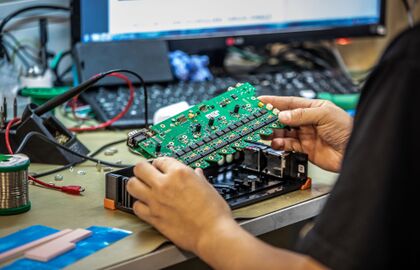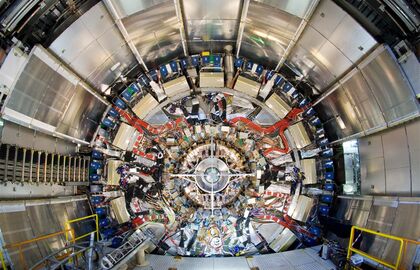Why invest in R&D in Slovenia? In short, because of the top local talent and excellent support from research and academic institutions. The Alpine republic offers a dynamic and stimulative environment where the number of researchers has more than doubled since the year 2000. Savvy investors are aware of Slovenia’s advantages in R&D. One of the world’s largest pharmaceutical companies has formed a key global competence centre for products and technologies in Slovenia. And according to a regular annual survey among German investors in central and Eastern Europe, Slovenia is the most attractive location for research and development investments in the region.
This is the result of local talent and of characteristics that could be linked to the Slovenian national character: resilience, a strong work ethic, and a passionate desire to excel. In the past, these traits have led to many visionary inventions. In the early 19th century, Slovenians were some of the inventors of glass plate photography (Janez Puhar) and postage stamps (Lovrenc Košir). Herman Potočnik Noordung’s book on space travel (1928) influenced German rocket constructors and consequently both the US and Soviet space programs. In more recent times Slovenians made significant contributions in areas ranging from artificial intelligence, pocket calculators* to revolutionary alpine ski designs**.
*Ethnic Slovenian France Rode developed the world’s first scientific pocket calculator for Hewlett Packard.
**Slovenian ski manufacturer Elan designed the world’s first carving skis, and more recently recently the first foldable skis.
Slovenian athletes are some of the best with world class champions in many sports. This is also the result of the talent, work ethic, and an unusually strong drive to excel that are typical of the Slovenian national character. The same characteristics are the basis for the success of Slovenian students. They are often the winners of international and global science and math competitions. Bloomberg’s Innovation Index puts Slovenia in 11th place in the sub ranking on tertiary education efficiency.
In the OECD’s PISA assessment, which combines math, science and reading literacy, Slovenian students reached the sixth best skill score. The international education system comparisons by the World Bank and UNO put Slovenia in 13th and 14th place in the world respectably. Slovenia also ranks 14th on the World Bank’s Human Capital Index comparison. Human capital is essential for both scientific breakthroughs and innovation processes in companies.
The well-developed network of scientific institutes provides excellent support to R&D departments in business with both applied and basic research and also with their well-developed technical infrastructure. The institutes closely cooperate with their peers around the globe on one side, and with the local businesses on the other.
Slovenia’s top scientific research center is the Josef Stefan Institute with around 1,000 researchers in natural sciences, life sciences, and engineering. IJS experts were among the pioneers in the early development of artificial intelligence and robotics. Despite its medium size, the institute holds global importance and is one of the four most prominent scientific institutions in Central and Eastern Europe (including ex-Soviet Union). Its key research areas include production and control technologies, communication and computer technologies, knowledge technologies, biotechnologies, new materials, environmental technologies, nanotechnologies, and nuclear engineering.
The National Institute of Chemistry researches areas like synthetic biology, nanobiotechnology, immunology, advanced materials, catalysts, and electrochemical processes. The institute is a member of the EU sponsored Battery 3000+ consortium working on the development of new battery systems and technologies. The main areas of focus for the National Institute of Biology include biotechnology, genetic toxicology, and cancer biology: the institute closely cooperates with pharmaceutical, agriculture and biotech industries. The efforts of the three large national research institutes are accompanied by the work of numerous smaller labs and augmented by research done on universities.
Eight centres of excellence and competence ensure a systematic flow of knowledge from the institutions to businesses.
Each centre has a clearly defined and narrow focus:
These centres are deeply embedded in global research through international projects. Many companies run their own excellence centres which also cooperate closely with local academic research institutions and with their global peers.
The high level of investment in R&D in Slovenia is to a large extent the result of R&D spending within companies. Between 2016 and 2018 over 50% of Slovenian companies develop or introduced new products, processed or services (SURS, 2020). The strong emphasis Slovenian companies put on R&D and innovation processes has led to the a value added in manufacturing: in this aspect Slovenia is in 8th place out of 200 evaluated countries (Bloomberg Innovation Index 2021).
The state supports R&D activities in the companies mostly via tax reductions and financial incentives. The total 100% amount invested in R&D can be claimed for tax reduction: up to 63% of the pre-tax profit in the first year, and the remaining difference over the next 5 years.
SID Banka, state owned development bank, supports research, development, and innovation in businesses through favourable loans with subsidised interest rate.





